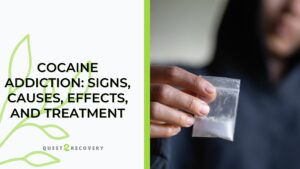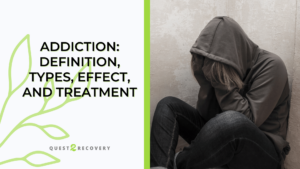Key Takeaway:
- The benefits of exercise in addiction recovery are significant: Exercise can help strengthen both the body and the mind, and plays a crucial role in the recovery process by improving overall health and wellness.
- Exercise has been shown to have a positive impact on mental health: Physical activity can reduce stress, boost happiness, and improve emotional and cognitive health.
- Exercise can be a powerful tool for overcoming addiction: Movement can serve as a coping mechanism for addiction and help combat substance abuse, while also reducing the risk of relapse.
Do you struggle with addiction and need help with your recovery? Exercise can make a significant difference, providing both physical and mental health benefits. You can gain strength, stability, and clarity to achieve lasting sobriety.

The Benefits of Exercise in Addiction Recovery: Strengthening Body and Mind
First, we’ll take a deep dive into the crucial role exercise plays in the recovery process. Through personal stories and scientific research, we’ll look at how physical activity benefits both the body and mind, and how it can help individuals regain control over their lives. Then, we’ll explore how taking a holistic approach to health and wellness through exercise can aid in addiction recovery – promoting balance, positivity, and healing.
The Crucial Role of Exercise in Addiction Recovery
Exercising plays a crucial role in addiction recovery. It is beneficial to both the body and mind and helps individuals maintain a healthy lifestyle. Exercise provides numerous benefits, including reducing stress and anxiety, increasing self-confidence and self-esteem, boosting mood, promoting better sleep, improving brain function, and preventing relapse.
Firstly, exercise aids in managing stress levels. Stress is a common trigger for substance abuse; however, physical activity releases endorphins that help reduce stress levels naturally. Secondly, exercise as a replacement activity reduces drug cravings by providing an alternative source of reward for the body. Thirdly, exercise increases self-esteem through regular activities that require discipline and goal setting leading to increased self-confidence.
Moreover, according to research by the National Institute on Drug Abuse (NIDA), exercising can help restore brain function impaired due to substance abuse hence aiding in rewiring the brain to reduce relapse potential. Drugs alter neural pathways leading to compulsively addictive behavior that renders it difficult even once someone has detoxed from them leading beneficiaries vulnerable to relapse. However consistent exercising leads to secretion of serotonin and dopamine that affects mood positively hence leading towards new neural pathways.
Practical suggestions are integral for those who wish to integrate physical practice into their low-point life within the beginning period of recovery-
- Break up sweat with high-intensity interval training (HIIT) because short bursts of intensity followed by short periods of rest are similar physiologically similar to what people experience during addiction regulation hence providing practical preparation.
- Lift weights cause more muscle results in more calories burned at rest also muscle development overtakes capabilities of other physical means such as running or cycling which tends not able to switch strategies when temporary depletion would have been occurred during workouts hence developing better mind-body connect.
- Try group activities because it fills a part of void left behind during detachment from addictive issues while building solid friendships with like-minded.
Ready steady go! Exercising is one way out when struggling with addiction; however, it is just one piece of the puzzle that comprises The Holistic Approach to Health and Wellness Through Exercise.
The Holistic Approach to Health and Wellness Through Exercise
Health and wellness are essential components of our lives, yet we often overlook them in the hustle and bustle of everyday life. However, a holistic approach to health and wellness through exercise can change this perspective completely. It not only focuses on physical fitness but also incorporates other aspects such as mental, emotional, and spiritual well-being.
The holistic approach believes that everything in our body is interconnected. Therefore, exercise cannot merely be thought of as a way to improve physical health; it also aids in managing mental health issues such as depression and anxiety. Exercise strengthens every part of the body, including the brain.
Exercise lowers cortisol levels in the body, which helps reduce stress and promotes relaxation by releasing endorphins into the bloodstream. Exercising outdoors has an added advantage as fresh air and natural surroundings help to clear the mind.
Nutrition is equally important when considering a holistic approach to health and wellness through exercise. Eating healthy food gives us energy, improves our immune system, keeps us feeling good emotionally, reduces lethargy after heavy or long workouts, improves focus during exercise, among other benefits.
According to research from Harvard Medical School*, exercising for just 30 minutes per day can significantly reduce the likelihood of major chronic illnesses such as heart disease or diabetes while promoting good health overall. This reinforces how essential taking care of ourselves through such an approach is for our bodies’ long-term sustainability.
Exercise and Mental Health: Boosting Happiness and Reducing Stress
Exercise is an essential tool to aid with addiction recovery from drugs and alcohol. In this section, I will be covering the link between physical activity and mental wellness. Did you know that exercise is a great means to boost not only our physical strength but also our mental and emotional health?
In the first sub-section, I will be exploring how physical activity can have a positive impact on our moods and overall well-being. Additionally, I will be discussing how exercise can be used as an effective stress management tool for individuals struggling with addiction recovery.
In the second sub-section, we will delve deeper into how exercise can improve cognitive function and emotional health during addiction recovery.
Exploring the Link Between Physical Activity and Mental Wellness
Physical activity is known to provide numerous benefits to our physical health such as weight management, reducing the risk of chronic diseases, and improving sleep quality. However, recent studies have also found a strong correlation between physical activity and mental wellness. Exploring the Link Between Physical Activity and Mental Wellness has become an increasingly popular topic amongst researchers, health professionals and the general public.
Through various mechanisms, physical activity impacts mental well-being. When we exercise, our body releases endorphins which act as natural painkillers and mood elevators. This leads to reduced stress levels, improved mood, and an overall sense of well-being. Moreover, regular exercise can also increase self-esteem, confidence levels and social interactions for people with depression or anxiety disorders.
Alongside that, several other factors contribute to enhancing mental wellness through physical activity such as combating negative thoughts by increasing focus on positive sensations or feelings during exercising. It helps regulate serotonin levels in the brain which are responsible for regulating sleep patterns and mood changes. Physical activity may also offer coping mechanisms for individuals struggling with past trauma or adversity.
For instance, history has proven that during World War I Red Cross organized recreation programs allowed soldiers with mental injuries recover their self-esteem and return home. Furthermore, psychiatric patients housed in hospitals in Paris were provided therapeutic exercise programs to combat symptoms associated with post-traumatic stress disorder during World War II.
The best part about these findings is that they come from an organic interaction amongst researchers, healthcare providers but most significantly everyday runners who’ve seen improvements not only in their physical but also their emotional being when adopting an active lifestyle. A common piece of advice being mentioned often now is “Exercise isn’t just about preventing you from getting sick or dying prematurely; it’s about helping you live a happier life today.”
Enhancing Emotional and Cognitive Health Through Exercise
Exercise has numerous physical benefits such as improved cardiovascular health, weight management, and increased muscle tone. However, it also plays a vital role in enhancing emotional and cognitive well-being. Engaging in regular exercise is proven to alleviate mild to moderate depression by releasing endorphins that boost mood and reduce stress levels. Exercise increases the production of neurotransmitters in the brain such as serotonin and dopamine, which help regulate emotions and promote feelings of satisfaction.
Apart from improving emotional health, exercise also enhances cognitive function. Regular exercise improves blood flow to the brain, which helps oxygenate brain cells and regenerates new ones, thereby increasing mental clarity, sharpness, and creativity. Exercise is an excellent tool for relieving anxiety since it reduces tension by decreasing levels of adrenaline and cortisol hormones.
What sets exercise apart from other self-help techniques is that it’s free of cost with no harmful effects (when done correctly). Moreover, studies show that exercising outdoors can be even more beneficial than working out indoors due to the calming effect nature provides. One hour of gym workout can result in improved sleep quality at night as well.
It’s time to move beyond conventional mental health therapies such as taking medication or booking appointments at a psychologist’s office. It is better to incorporate daily physical activity into our routines so we can go beyond just managing symptoms but empower ourselves to reach optimal emotional wellness; why miss out on all these fantastic benefits?
Hey buddy! Feeling pumped up already? Hold your horses because we have an exciting topic coming soon – ‘Exercise and Substance Abuse: Overcoming Addiction through Movement.’ Stay tuned for more insights!

Exercise and Substance Abuse: Overcoming Addiction through Movement
Exercise as a Powerful Coping Mechanism for Addiction
For those struggling with addiction, finding an effective coping mechanism is essential for maintaining sobriety. One such powerful tool is exercise. Numerous studies have shown that regular exercise not only improves physical health, but also has positive effects on mental health and overall wellness. In fact, many addiction treatment programs incorporate physical activity as a key component of their recovery plans.
Exercise works as a coping mechanism for addiction in several ways. Firstly, it releases endorphins, which are hormones that reduce stress and increase feelings of happiness and pleasure. These natural feel-good chemicals can help to counteract the negative effects of drug or alcohol cravings. Additionally, exercise promotes self-discipline and helps people establish healthy habits while breaking free from destructive ones.
One valuable aspect of using exercise as a coping mechanism for addiction is that it provides a sense of community and social support. Exercise classes or group sports give individuals the opportunity to connect with others who share similar experiences or interests. This sense of belonging can be crucial for those who may feel isolated or alone in their journey towards recovery.
Furthermore, exercise can serve as a healthy outlet for emotions that might otherwise lead to relapse. When feeling stressed, sad or angry, engaging in physical activity allows individuals to release tension and process emotions in a constructive way rather than turning to drugs or alcohol as an escape.

The Preventative Power of Exercise in Avoiding Relapse
Exercise has extraordinary power in preventing relapse for individuals recovering from addiction. Physical activity helps in healing the body, eliminating toxins, and regulates brain function. The benefits of exercise extend beyond physical improvements, but also work as a natural mood booster—reducing symptoms related to depression and anxiety while boosting feelings of confidence, satisfaction, and enjoyment. It’s well documented that engaging in regular exercise can improve overall health and increase wellbeing.
Studies show there is a clear correlation between exercise intensity, frequency, duration and positive results towards sobriety. Enhanced executive functions such as self-control, reasoning skills, decision-making ability are seen among individuals who participate in high-intensity workouts regularly. Exercise increases endorphins levels which produce positive emotional states reducing negative consequences leading to substance abuse disorders such as depression or anxiety.
Low self-esteem is one of the primary factors leading people towards addiction. By exercising regularly individuals feel a sense of achievement resulting in improved self-image, motivation to achieve goals they never thought possible before. Exercise creates accountability with oneself; consistency becomes part of daily life resulting in perseverance through difficult times.
Research cites how exercise is essential when supporting mental health during recovery efforts after suffering from addiction due to its focus on mindfulness techniques such as breath-work practices or meditation which helps to reduce stress elevations caused by addictions like drugs or alcohol.
Exercise has helped millions over the years achieve a sense of progress towards recreating their lives after addiction. One example is actor Robert Downey Jr., who turned his disastrous cocaine habit into an incredibly successful professional life by using fitness as a preventative measure against the tempting urges that threatened his sobriety every day.
Exercise and Quality of Life: Building a Better Future
As I embarked on my journey towards addiction recovery, I found solace in exercising. It turns out that the benefits of exercise go way beyond building a stronger body. In this section, we’ll see how exercise can contribute to a better quality of life. First, we’ll examine the transformational impact of exercise on daily routines, relationships, and overall outlook on life. Then, we’ll dive into how exercise can improve overall wellbeing and boost positivity, productivity, and cognitive function. The effects of exercise on our physical and mental states are too incredible to ignore, and I’m excited to share my experiences with you.
The Transformational Impact of Exercise on Quality of Life
Regular physical exercise has the power to transform an individual’s quality of life. It has a significant impact on our mental health, emotional well-being, and overall physical health. When we exercise regularly, our bodies release endorphins that help alleviate stress, anxiety and depression. These natural pain relievers also lift our mood and make us feel happy.
The transformational impact of exercise is not only limited to our mental health but extends to physical health as well. Regular physical activity helps maintain weight, reduce the risk of chronic diseases such as obesity, diabetes and heart disease. Additionally, regular movement improves sleep quality, enhances energy levels and strengthens the immune system.
Scientists over the years have discovered that even a little bit of exercise can go a long way in improving one’s quality of life. Even short bursts of moderate to high-intensity exercise like a quick walk or jog can cause significant changes in brain chemistry which lead to improved mood states.
Exercise is also known to be an effective form of addiction recovery treatment as it is a positive outlet for stress and anxiety instead of resorting back to problematic addiction patterns. The addict’s body chemistry changes drastically when they perform routine exercises that boost their metabolism while simultaneously elevating their overall mood.
We must all take charge of our lives by creating opportunities for healthy habits such as regular exercise routines. Neglecting self-care significantly reduces the chances of leading a full-filled life since no one wants a life with pervasive ailments or issues slowly killing them over time. It’s never too late to start on this path because the benefits are exponential: improved emotional wellness, physical strength enhancement from endurance exercises over time resulting in enhanced connections/community engagement with peers outside your daily home environment who share similar interests around fitness – all possible indications for how much one’s quality of life can improve through keeping themselves active.
Find Healing At Quest2Recovery
At Quest2Recovery, we understand the important role of physical activity in addiction recovery, which is why we offer personalized exercise programs as part of our comprehensive treatment plans. If you or a loved one is struggling with addiction and seeking a holistic approach to recovery, reach out to our team today and take the first step towards a healthier, more fulfilling life.
Five Well-Known Facts About The Benefits of Exercise in Addiction Recovery:
- ✅ Exercise can help reduce stress and anxiety, which are common triggers for addiction relapse. (Source: Harvard Health Publishing)
- ✅ Physical activity releases endorphins, which can lead to feelings of happiness and pleasure. (Source: Mayo Clinic)
- ✅ Exercise can improve cognitive function and decision-making abilities, which are often impaired in addiction recovery. (Source: Journal of Addiction Research & Therapy)
- ✅ Regular exercise can improve overall health and wellness, reducing the risk of chronic diseases associated with addiction, such as heart disease and diabetes. (Source: American Society of Addiction Medicine)
- ✅ Incorporating exercise into a daily routine can provide structure and a sense of purpose, which can be helpful in maintaining sobriety. (Source: National Institute on Drug Abuse)
FAQs about The Benefits Of Exercise In Addiction Recovery: Strengthening Body And Mind
What are the benefits of exercise in addiction recovery?
The benefits of exercise can improve physical health, boost mood and self-esteem, and reduce stress and anxiety. Additionally, it can help recovering individuals establish a healthy routine and replace addictive behaviors with healthier habits.
What types of exercises are most effective for addiction recovery?
Any type of physical activity can be beneficial, but strength training and cardiovascular exercises are especially helpful. Activities that promote mindfulness, such as yoga and tai chi, can also be effective in reducing stress and promoting well-being.
How does exercise help with the mental aspects of addiction recovery?
Exercise can have a positive impact on mood and self-esteem, which are often negatively impacted during addiction and recovery. It can also reduce symptoms of depression and anxiety, and help with cognition and focus.
Can exercise be used as a standalone treatment for addiction?
No. Exercise can be a valuable component of addiction treatment and recovery, but it is not a substitute for comprehensive professional care. It is important for individuals struggling with addiction to seek help from licensed professionals and receive individualized care.
How much exercise should individuals in addiction recovery aim for?
It is recommended that adults aim for at least 150 minutes of moderate-intensity exercise each week. However, it’s important to start slowly and work up to this amount if an individual is not currently physically active. It’s also important to listen to your body and not overexert yourself.
What steps can individuals take to incorporate exercise into their addiction recovery plan?
First, consult with a licensed healthcare provider to ensure exercise is safe for you. Next, identify types of physical activity that you enjoy and that will fit into your schedule. Start slowly and increase activity gradually. Consider joining a fitness class or partnering with a workout buddy for accountability and support.









